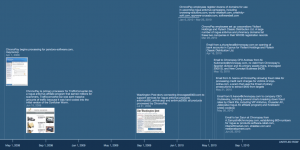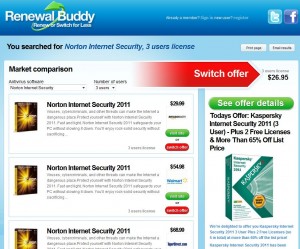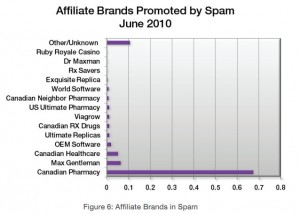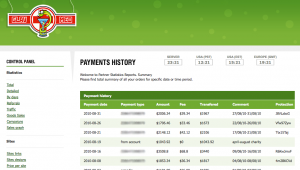Crooks who create botnets with the help of crimeware kits SpyEye and ZeuS are actively venting their frustration with two Web services that help ISPs and companies block infected machines from communicating with control networks run by these botmasters. The lengths to which established cyber criminals are willing to go to disable and discredit these anti-fraud services provide convincing proof that the services are working as designed, and that the bad guys are suffering financially as a result.
The creations of Swiss security expert Roman Hüssy,  ZeusTracker and its sister service SpyEye Tracker have endured countless distributed denial-of-service (DDoS) attacks from botmasters apparently retaliating for having their network infrastructure listed by these services. At one point, someone wrote a fake suicide in Hüssy’s name and distributed it to his family and friends, prompting local police to rouse him from slumber to investigate his well-being. But, those attacks haven’t deterred Hüssy or sidelined his services.
ZeusTracker and its sister service SpyEye Tracker have endured countless distributed denial-of-service (DDoS) attacks from botmasters apparently retaliating for having their network infrastructure listed by these services. At one point, someone wrote a fake suicide in Hüssy’s name and distributed it to his family and friends, prompting local police to rouse him from slumber to investigate his well-being. But, those attacks haven’t deterred Hüssy or sidelined his services.
Now, the attackers are beginning to consider stealthier and more diabolical ways to strike back. A series of discussions on an uber-exclusive Russian language forum that caters to identity and credit card thieves reveal that botmasters are becoming impatient in their search for a solution that puts Hüssy and/or his tracking services out of commission once and for all (click the images in this post twice to read along).
“DDoSing doesn’t bring satisfactory results. We’re now working on mapping his entire infrastructure, flag his scripts,” writes a user named Sal, who claims to specialize in providing bulletproof servers. “Now we will engage in a pinpointed assault. This should be cheaper + should bring results at least temporarily….Let’s brainstorm here.”
 Other members join the discussion. One suggests pooling funds to hire a hitman. “It’s easier and more productive to just use a joint fund to hire a killer, and story’s over,” writes user “Femar.” Another forum member named “Deviant” recommends dosing Hüssy with organic mercury. “Dimethylmercury – the fluid has no color. One drop on your hand will penetrate thick latex gloves. Lethal result is guaranteed within one month.”
Other members join the discussion. One suggests pooling funds to hire a hitman. “It’s easier and more productive to just use a joint fund to hire a killer, and story’s over,” writes user “Femar.” Another forum member named “Deviant” recommends dosing Hüssy with organic mercury. “Dimethylmercury – the fluid has no color. One drop on your hand will penetrate thick latex gloves. Lethal result is guaranteed within one month.”
But forum members seemed to coalesce around an idea for seeding the ZeuS and SpyEye configuration files (those that list the location of key parts of the botnet, such as the place to deposit stolen data) with legitimate Web sites. Their stated goal? To cause SpyEye Tracker and ZeuS Tracker to flag legitimate sites as hostile, and thereby to lose credibility with ISPs that rely on the trackers.
I caught up with Hüssy via instant message yesterday, and asked whether he’d seen any SpyEye or ZeuS configuration files seeded with legitimate sites. He just laughed.
“ZeusTracker checks if a command and control server is really up before adding it to the blocklist,” Hüssy said. “These guys have no clue how ZeusTracker works.”













